Physics of Semiconductor Devices Lecture 4. Generation

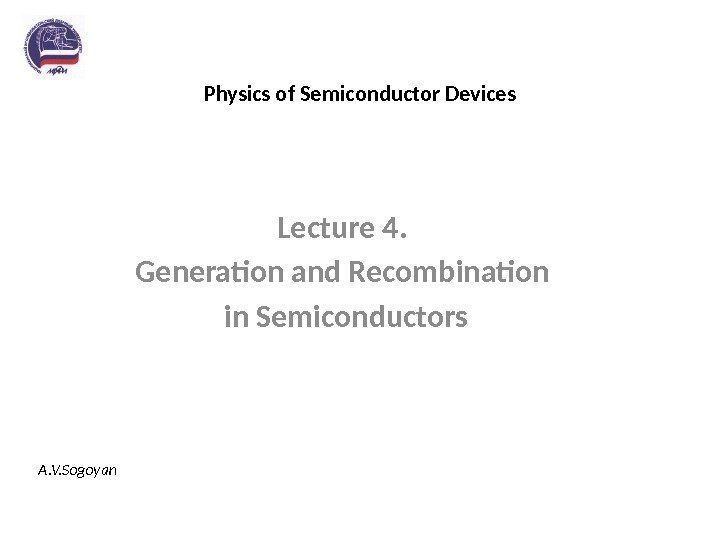
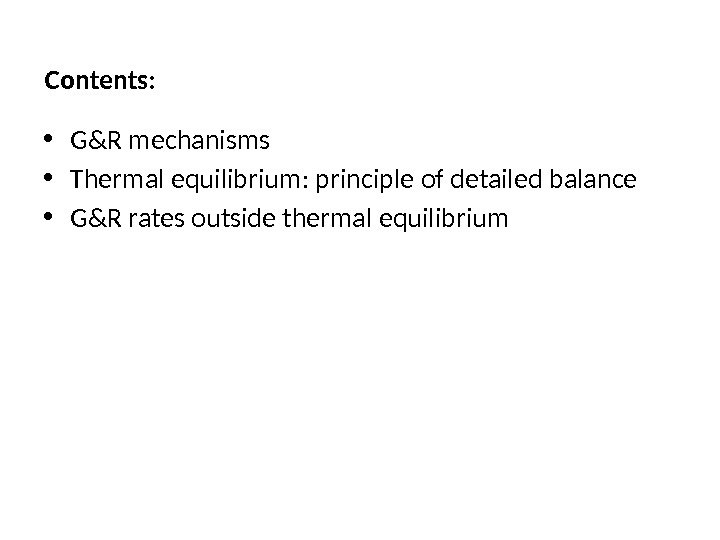
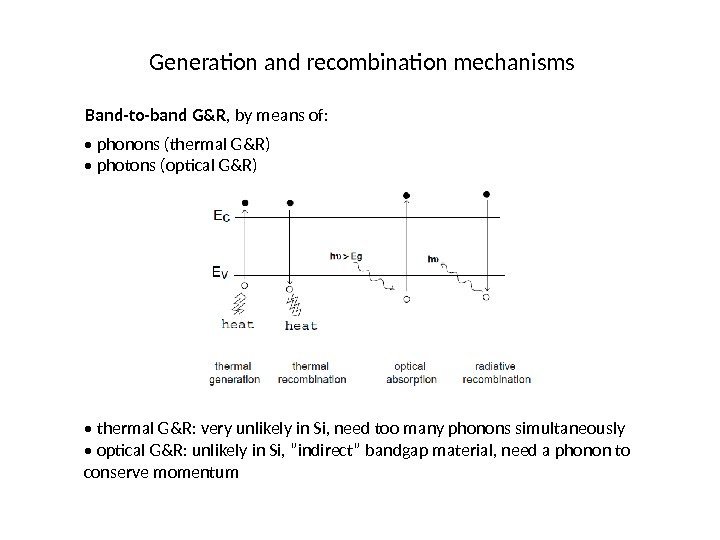
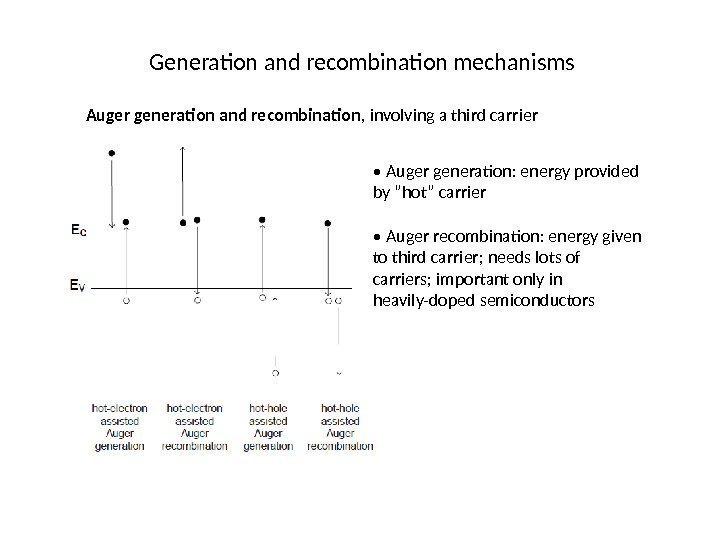
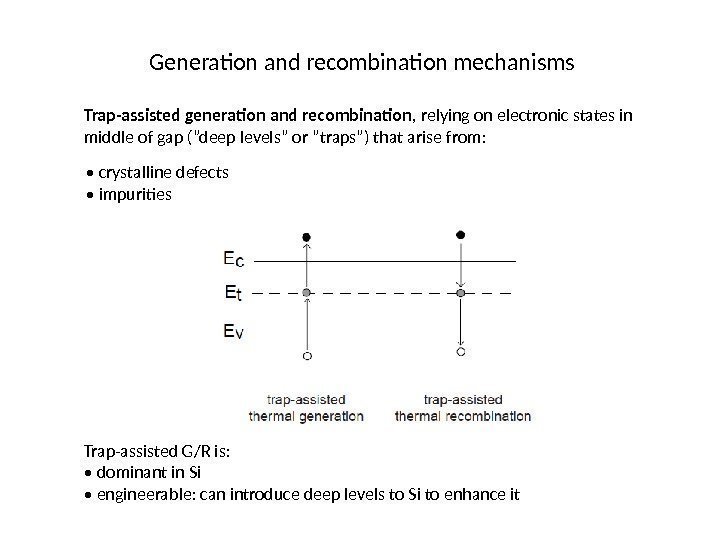
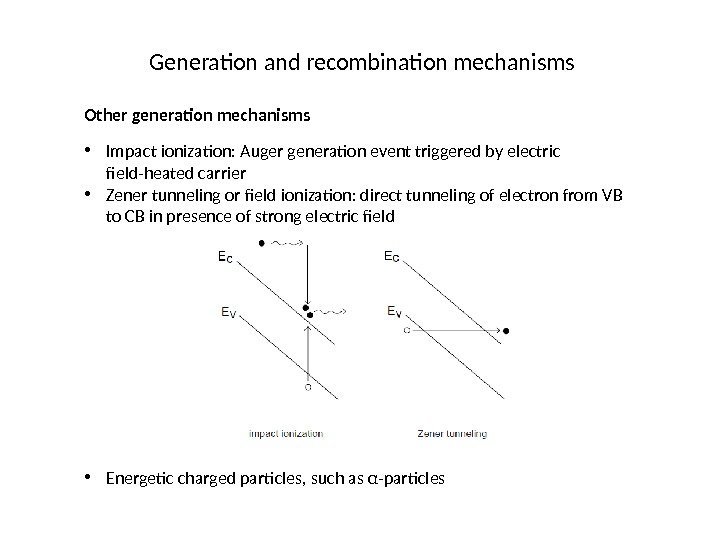
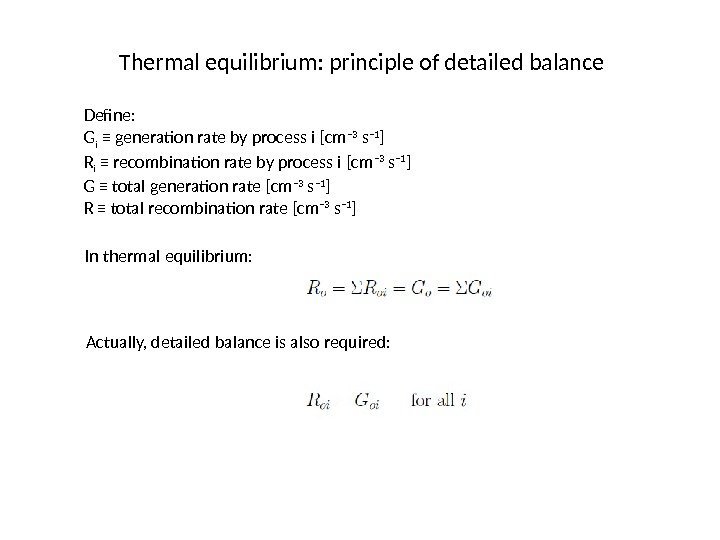
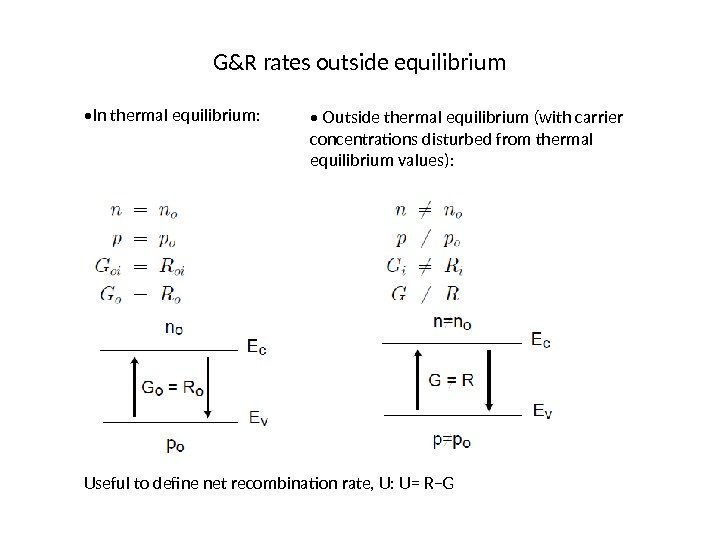
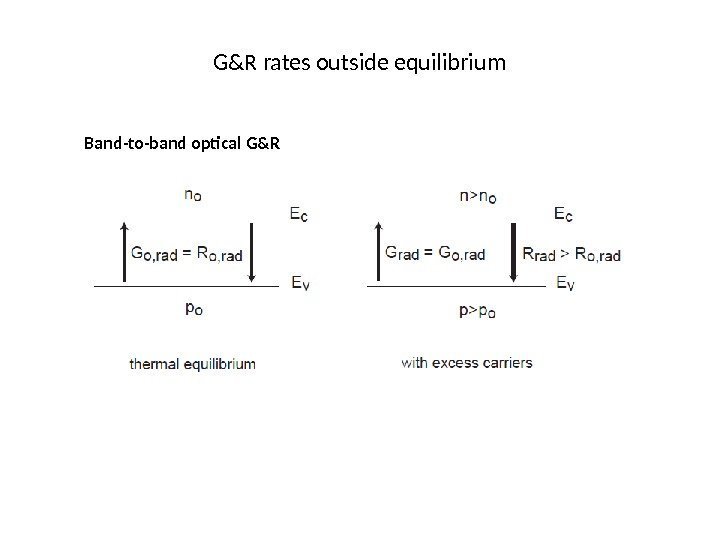
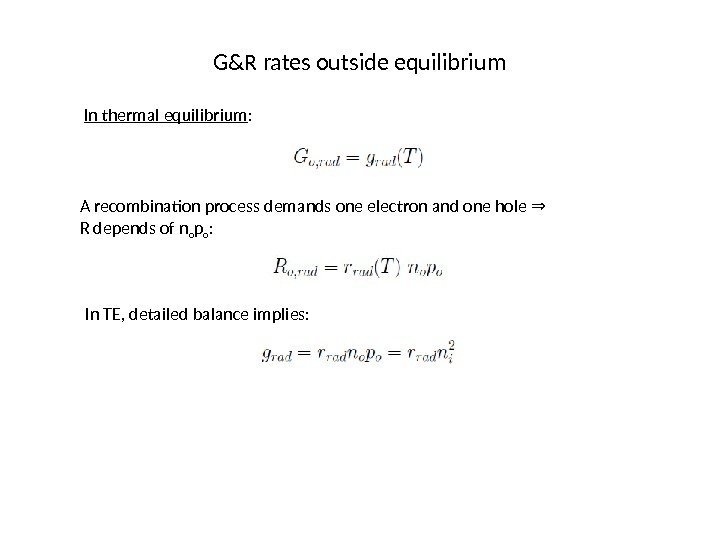
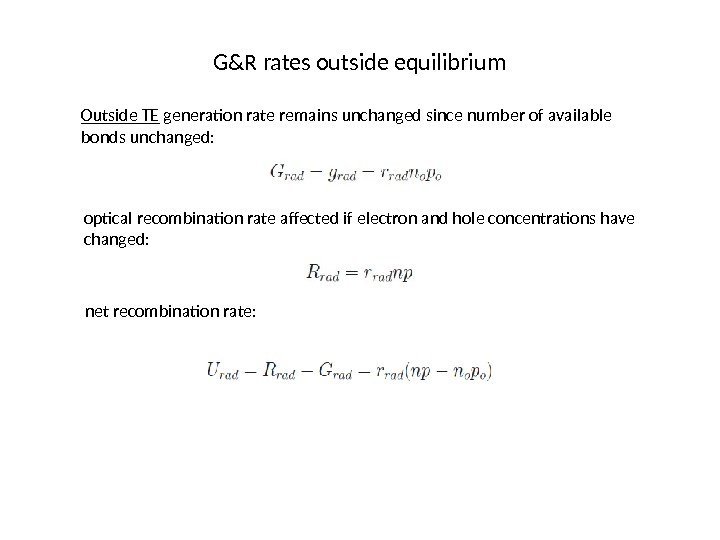
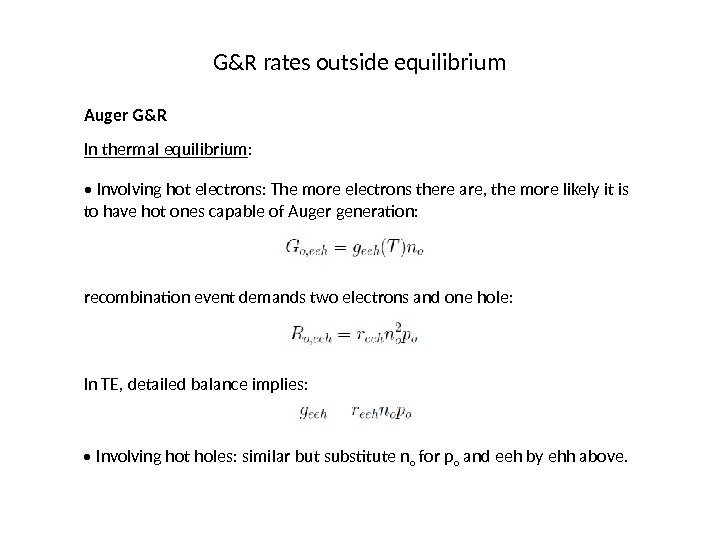
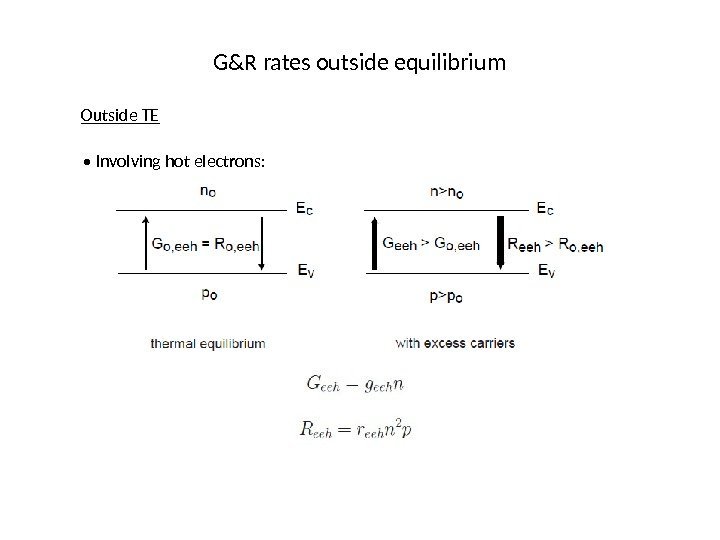
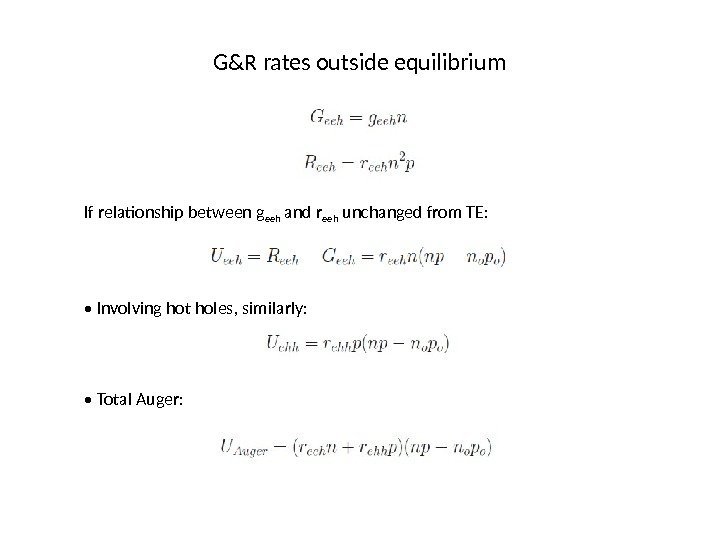
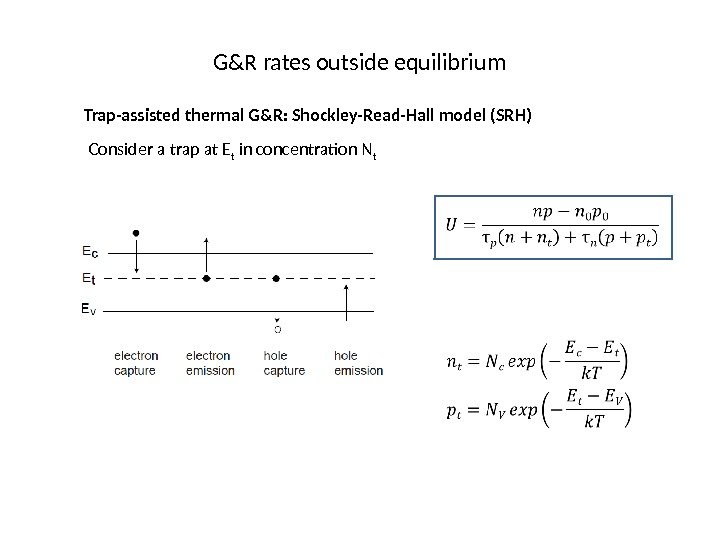
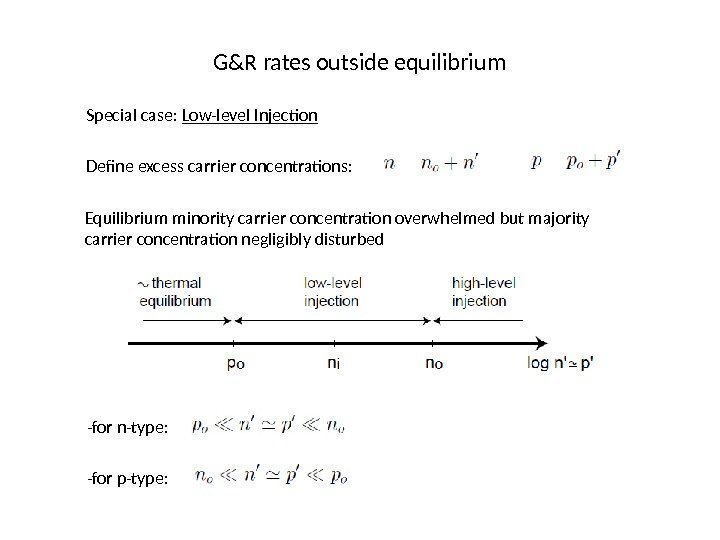
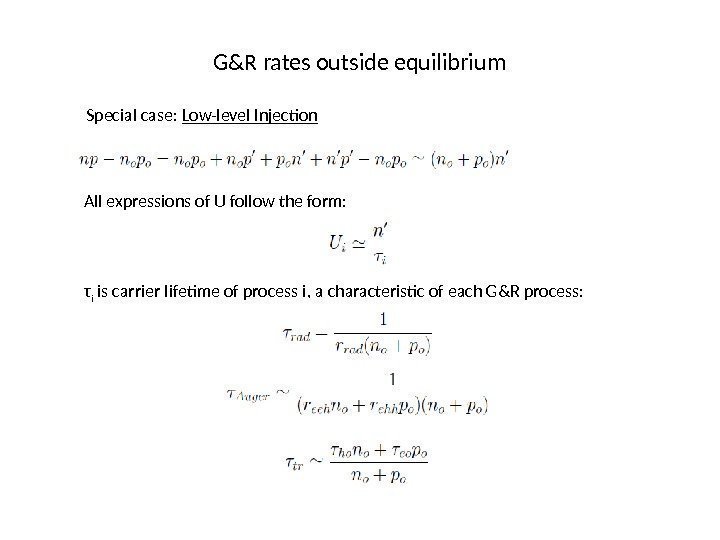
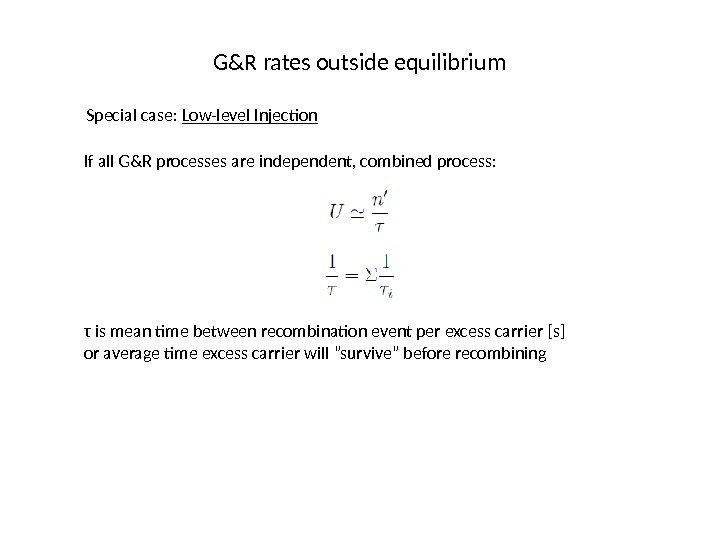
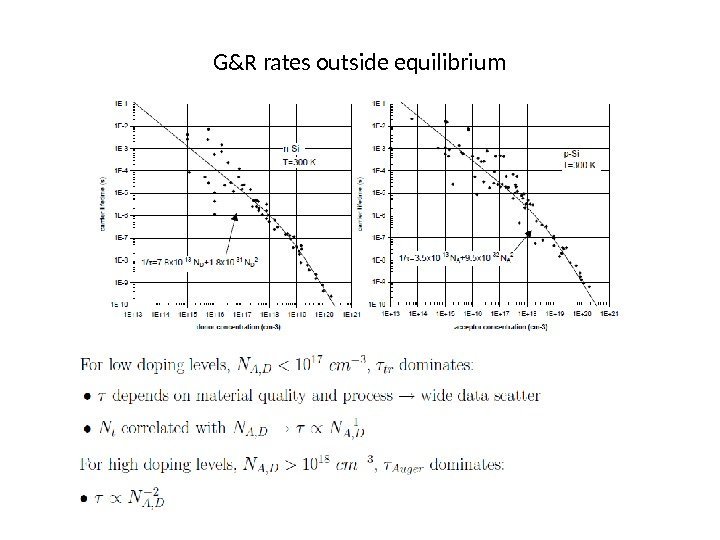
lecture_4.pptx
- Размер: 478.9 Кб
- Автор:
- Количество слайдов: 19
Описание презентации Physics of Semiconductor Devices Lecture 4. Generation по слайдам
 Physics of Semiconductor Devices Lecture 4. Generation and Recombination in Semiconductors A. V. Sogoyan
Physics of Semiconductor Devices Lecture 4. Generation and Recombination in Semiconductors A. V. Sogoyan
 Contents: • G&R mechanisms • Thermal equilibrium: principle of detailed balance • G&R rates outside thermal equilibrium
Contents: • G&R mechanisms • Thermal equilibrium: principle of detailed balance • G&R rates outside thermal equilibrium
 Generation and recombination mechanisms Band-to-band G&R , by means of: • phonons (thermal G&R) • photons (optical G&R) • thermal G&R: very unlikely in Si, need too many phonons simultaneously • optical G&R: unlikely in Si, ”indirect” bandgap material, need a phonon to conserve momentum
Generation and recombination mechanisms Band-to-band G&R , by means of: • phonons (thermal G&R) • photons (optical G&R) • thermal G&R: very unlikely in Si, need too many phonons simultaneously • optical G&R: unlikely in Si, ”indirect” bandgap material, need a phonon to conserve momentum
 Generation and recombination mechanisms Auger generation and recombination , involving a third carrier • Auger generation: energy provided by ”hot” carrier • Auger recombination: energy given to third carrier; needs lots of carriers; important only in heavily-doped semiconductors
Generation and recombination mechanisms Auger generation and recombination , involving a third carrier • Auger generation: energy provided by ”hot” carrier • Auger recombination: energy given to third carrier; needs lots of carriers; important only in heavily-doped semiconductors
 Generation and recombination mechanisms Trap-assisted generation and recombination , relying on electronic states in middle of gap (”deep levels” or ”traps”) that arise from: • crystalline defects • impurities Trap-assisted G/R is: • dominant in Si • engineerable: can introduce deep levels to Si to enhance it
Generation and recombination mechanisms Trap-assisted generation and recombination , relying on electronic states in middle of gap (”deep levels” or ”traps”) that arise from: • crystalline defects • impurities Trap-assisted G/R is: • dominant in Si • engineerable: can introduce deep levels to Si to enhance it
 Generation and recombination mechanisms Other generation mechanisms • Impact ionization: Auger generation event triggered by electric field-heated carrier • Zener tunneling or field ionization: direct tunneling of electron from VB to CB in presence of strong electric field • Energetic charged particles, such as α-particles
Generation and recombination mechanisms Other generation mechanisms • Impact ionization: Auger generation event triggered by electric field-heated carrier • Zener tunneling or field ionization: direct tunneling of electron from VB to CB in presence of strong electric field • Energetic charged particles, such as α-particles
 Thermal equilibrium: principle of detailed balance Define: G i ≡ generation rate by process i [cm − 3 s − 1 ] R i ≡ recombination rate by process i [cm − 3 s − 1 ] G ≡ total generation rate [cm − 3 s − 1 ] R ≡ total recombination rate [cm − 3 s − 1 ] In thermal equilibrium: Actually, detailed balance is also required:
Thermal equilibrium: principle of detailed balance Define: G i ≡ generation rate by process i [cm − 3 s − 1 ] R i ≡ recombination rate by process i [cm − 3 s − 1 ] G ≡ total generation rate [cm − 3 s − 1 ] R ≡ total recombination rate [cm − 3 s − 1 ] In thermal equilibrium: Actually, detailed balance is also required:
 G&R rates outside equilibrium • In thermal equilibrium: • Outside thermal equilibrium (with carrier concentrations disturbed from thermal equilibrium values): Useful to define net recombination rate, U: U= R−G
G&R rates outside equilibrium • In thermal equilibrium: • Outside thermal equilibrium (with carrier concentrations disturbed from thermal equilibrium values): Useful to define net recombination rate, U: U= R−G
 G&R rates outside equilibrium Band-to-band optical G&R
G&R rates outside equilibrium Band-to-band optical G&R
 G&R rates outside equilibrium In thermal equilibrium : A recombination process demands one electron and one hole ⇒ R depends of n o p o : In TE, detailed balance implies:
G&R rates outside equilibrium In thermal equilibrium : A recombination process demands one electron and one hole ⇒ R depends of n o p o : In TE, detailed balance implies:
 G&R rates outside equilibrium Outside TE generation rate remains unchanged since number of available bonds unchanged: optical recombination rate affected if electron and hole concentrations have changed: net recombination rate:
G&R rates outside equilibrium Outside TE generation rate remains unchanged since number of available bonds unchanged: optical recombination rate affected if electron and hole concentrations have changed: net recombination rate:
 G&R rates outside equilibrium Auger G&R In thermal equilibrium : • Involving hot electrons: The more electrons there are, the more likely it is to have hot ones capable of Auger generation: recombination event demands two electrons and one hole: In TE, detailed balance implies: • Involving hot holes: similar but substitute n o for p o and eeh by ehh above.
G&R rates outside equilibrium Auger G&R In thermal equilibrium : • Involving hot electrons: The more electrons there are, the more likely it is to have hot ones capable of Auger generation: recombination event demands two electrons and one hole: In TE, detailed balance implies: • Involving hot holes: similar but substitute n o for p o and eeh by ehh above.
 G&R rates outside equilibrium Outside TE • Involving hot electrons:
G&R rates outside equilibrium Outside TE • Involving hot electrons:
 G&R rates outside equilibrium If relationship between g eeh and r eeh unchanged from TE: • Involving hot holes, similarly: • Total Auger:
G&R rates outside equilibrium If relationship between g eeh and r eeh unchanged from TE: • Involving hot holes, similarly: • Total Auger:
 G&R rates outside equilibrium Trap-assisted thermal G&R: Shockley-Read-Hall model (SRH) Consider a trap at E t in concentration N t
G&R rates outside equilibrium Trap-assisted thermal G&R: Shockley-Read-Hall model (SRH) Consider a trap at E t in concentration N t
 G&R rates outside equilibrium Special case: Low-level Injection Define excess carrier concentrations: Equilibrium minority carrier concentration overwhelmed but majority carrier concentration negligibly disturbed -for n-type: -for p-type:
G&R rates outside equilibrium Special case: Low-level Injection Define excess carrier concentrations: Equilibrium minority carrier concentration overwhelmed but majority carrier concentration negligibly disturbed -for n-type: -for p-type:
 G&R rates outside equilibrium Special case: Low-level Injection All expressions of U follow the form: τ i is carrier lifetime of process i, a characteristic of each G&R process:
G&R rates outside equilibrium Special case: Low-level Injection All expressions of U follow the form: τ i is carrier lifetime of process i, a characteristic of each G&R process:
 G&R rates outside equilibrium Special case: Low-level Injection If all G&R processes are independent, combined process: τ is mean time between recombination event per excess carrier [s] or average time excess carrier will ”survive” before recombining
G&R rates outside equilibrium Special case: Low-level Injection If all G&R processes are independent, combined process: τ is mean time between recombination event per excess carrier [s] or average time excess carrier will ”survive” before recombining
 G&R rates outside equilibrium
G&R rates outside equilibrium

